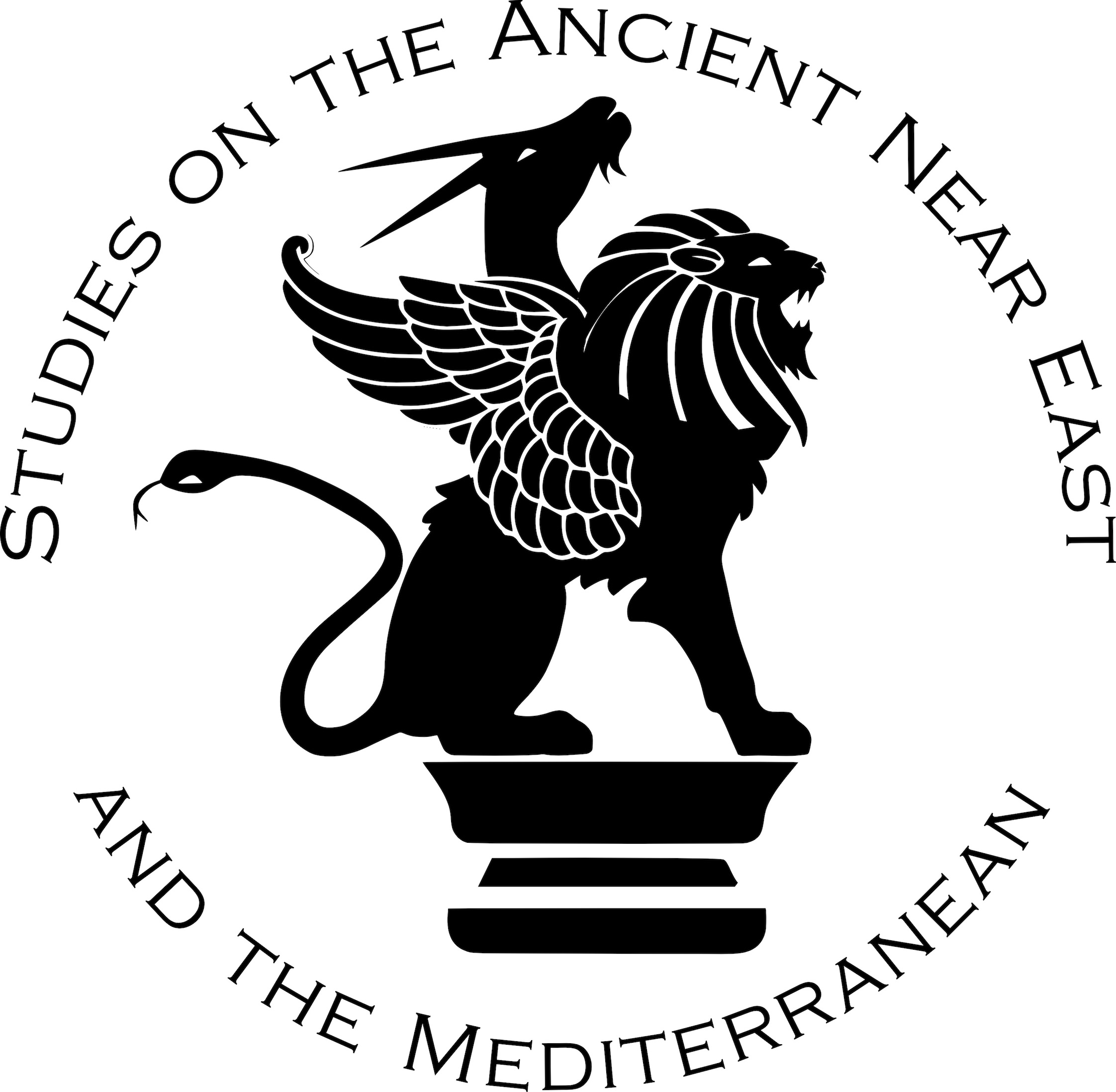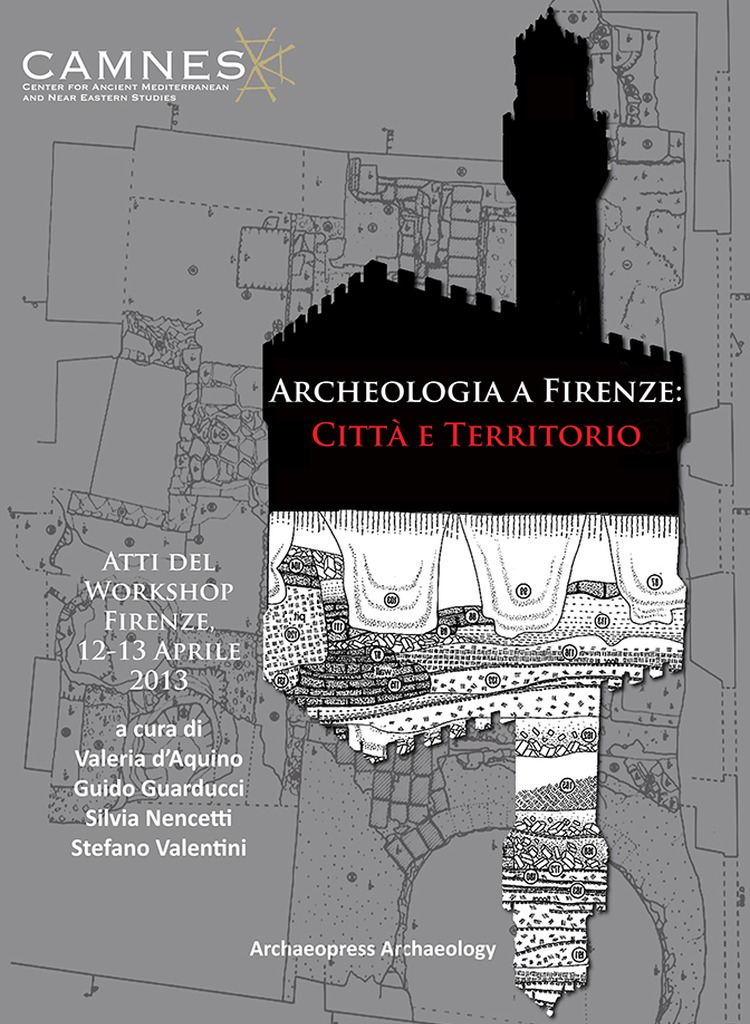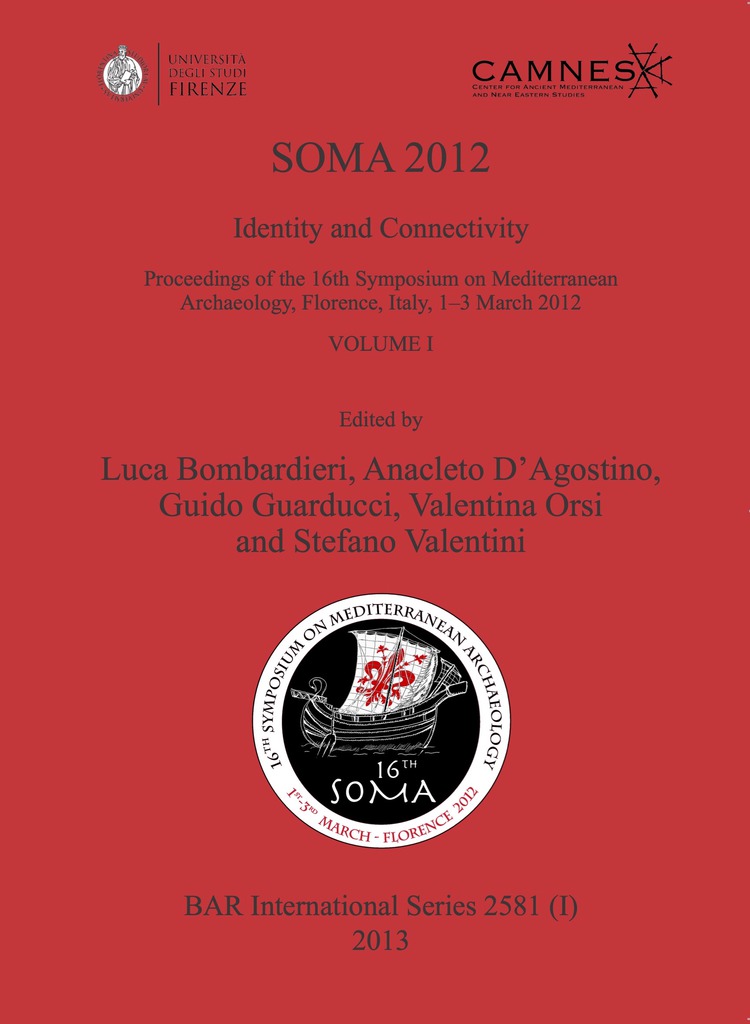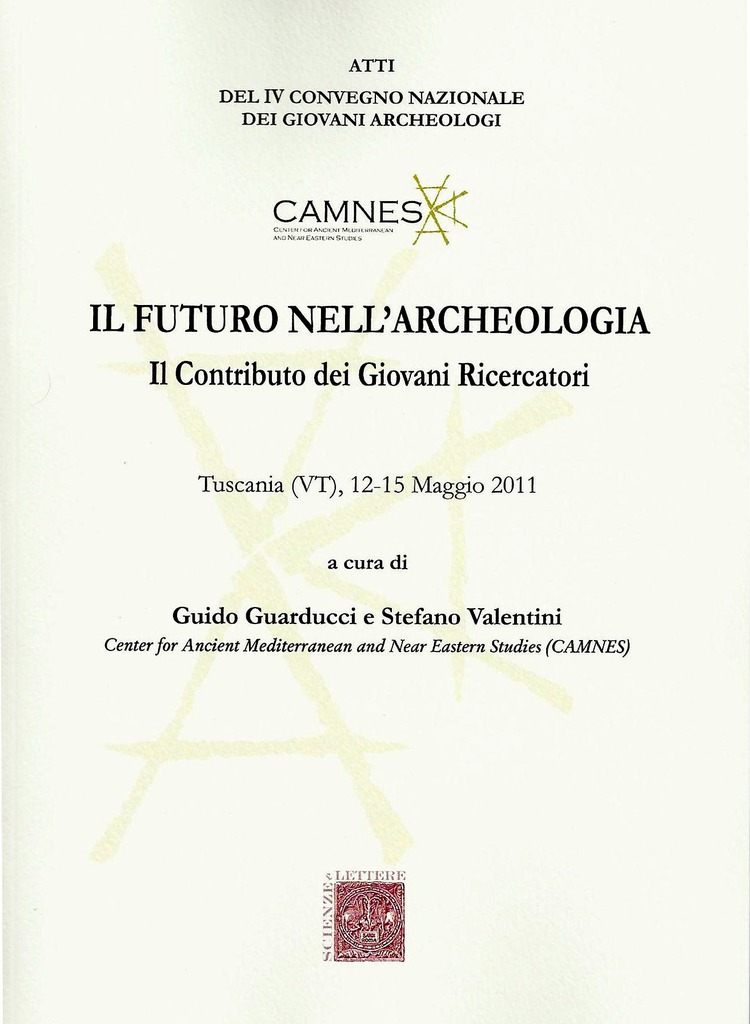SANEM 6
ARCHEOLOGIA IN TOSCANA:
Ricerca, Tutela, Gestione, Valorizzazione
Atti del Convegno di Firenze, 7-9 Giugno 2023
Edited by Stefano Valentini - Guido Guarducci - Valentina Santini
Arbor Sapientiae (Roma), 2024
About ten years after the edition of the volume "Archeology in Florence: City and Territory", CAMNES publishes the Proceedings of the conference "Archeology in Tuscany", held in Florence in June 2023. The volume is divided into thematic sections that collect The contributions presented during the conference by archaeologists, researchers and operators of the cultural heritage sector, of all the Superintendencies of Archeology, Fine Arts and Landscape of Tuscany, of the Universities of Florence, Siena, Pisa and Foreigners of Siena, of the Regional Museum Directorate, of the CNR and the management of goods, institutions, cultural activities and sports of the Tuscany Region. The contributions, focused on the different geographical areas of Tuscany, cross the history of this land from prehistory to the Middle Ages and return to the reader an comprehensive picture of the work done by researchers, archaeologists and operators of cultural heritage, in the last ten years, on the sites, parks and regional archaeological museums. A work that is here to demonstrate that archeology is not only that of the great discoveries, but above all that of daily and patient work of many figures active in the field, in all phases of the "archaeological process".
INDEX (each contribution has an English abstract)
Introduzione
Archeologia per le Comunità
Papers
- Elisabetta Giorgi, Andrea Arrighetti, Alessandra Nardini, Laura Pagliantini, Nicoletta Volante – Archeologia con e per le comunità: per una concreta attuazione della Convenzione di Faro
- Simonetta Menchelli, Anna Anguissola, Francesca Anichini, Gabriele Gattiglia – Archeologia per le comunità. Alcune iniziative degli Archeologi ed Archeologhe dell’Università di Pisa
- Michele Nucciotti – Archeologia Pubblica e Archeologia Leggera a Firenze: mappare le trasformazioni urbane della ‘Città Profonda’
- Claudia Noferi – Co-progettazione, social media e mediazione di un patrimonio condiviso. Le aree archeologiche di Vetulonia, Roselle e Cosa tra collaborazioni consolidate e nuovi progetti
Posters
- Maddalena Chelini, Fabio Martini, Chiara De Marco, Manuela Fusi, Lucia Sarti – Archeologia sociale: esperienze di gestione per uno sviluppo educativo delle comunità
- Chiara De Marco, Maria Teresa Cuda, Fabio Martini, Giovanna Pizziolo, Lucia Sarti, Nicoletta Volante – "ABC-Archeologia Bene Comune”: una rete di musei toscani per la valorizzazione della Preistoria
Archeologia della Produzione
Papers
- Luisa Dallai, Giovanna Pizziolo, Nicoletta Volante, Andrea Zifferero – Risorse ed economie nei paesaggi minerari maremmani dalla Preistoria alla prima Età Moderna
- Claudia Sciuto, Cristiana Petrinelli Pannocchia, Alice Vassanelli, Jacopo Gennai, Elisabetta Starnini – Archeologia dei materiali lapidei tra Paleolitico e Contemporaneità nella Toscana nord-occidentale: produzione, riciclo e sostenibilità
Posters
- Cristiana Petrinelli Pannocchia, Alice Vassanelli, Antonio Borzatti de Loewenstern, Barbara Raimondi – Nuove ricerche, vecchie collezioni: gli ornamenti in steatite pre-protostorici della Toscana
- Alice Vassanelli – MARMO: i più antichi manufatti in marmo della Toscana
- Andrea Terziani, Cecilia Viti, Nicoletta Volante – Strategie di lavoro in una miniera di cinabro tardo neolitica. Dati preliminari sull’analisi tecno-funzionale e petrografica dei macrolithic tools di Poggio Spaccasasso (Alberese, GR)
Pubblico e Privato: tra Promozione e Collaborazione
Papers
- Antonio Alberti, M. Chiara Bettini, Claudia Rizzitelli, Alessandro Zanini – Un insediamento protostorico nella periferia di Pisa
- Chiara Lanari, Francesco Tapinassi, Maria Angela Turchetti, Giuseppe M. Della Fina, Gianluca Bambi – Il prodotto turistico omogeneo ‘Toscana Terra Etrusca’
- Neva Chiarenza – Una bottega tintoria rinascimentale nel Centro Storico di Lucca: esempio virtuoso di collaborazione fra pubblico e privato
- Susanna Sarti, Giada Fatucci – Novità da Cosa. L’archivio dell’American Academy in Rome racconta
Valorizzazione: dallo Scavo al Museo
Papers
- Chiara Valdambrini, Claudia Noferi, Valter Nunziatini, Linda Venturi, Daniele Visconti – Il Museo Archeologico e d’Arte della Maremma di Grosseto, Roselle ed il progetto GrITAccess del Programma Interregionale Italia-Francia Marittimo
- Silvia Guideri, Marta Coccoluto, Elena Pianea, Alessandro Bezzini, Valerio Tesi, Leonardo Bochicchio, Stefano Casciu, Maria Gatto – Il Parco Archeologico di Baratti e Populonia, il Museo di Piombino e l'Accordo MIC-RT-Comune di Piombino come best practice
- Giulia Picchi – Tutela e valorizzazione dei beni archeologici dalle cave di Carrara: problematiche e interventi realizzati
- Neva Chiarenza, Giulia Picchi – Dallo scavo al museo: studio, restauro e valorizzazione del sarcofago in piombo di Antraccoli, Lucca
- Francesca Condò, Maria Gatto – Gli Arretina vasa: una questione di branding. Il racconto della fortuna della terra sigillata aretina nelle sale rinnovate del Museo Archeologico Nazionale di Arezzo
- Arianna Vernillo, Annalena Brini, Gabriella Capecchi, Paolo Liverani, Pasquino Pallecchi, Anna Patera, Giovanni Rotondi, Monica Salvini – Dilacerata Signa: frammenti di statuaria romana in bronzo dai Renai di Signa. Dal recupero alla musealizzazione
Posters
- Angela Cardini, Maria Teresa Cuda, Claudio Mancianti, Massimo Marini, Nicoletta Volante – Interventi di valorizzazione nel Parco Archeologico Naturalistico di Belverde (Cetona, SI)
- Francesca Bertini, Arianna Vernillo – Gonfienti e il Museo archeologico presso la Rocca Strozzi a Campi Bisenzio. La lunga storia del popolamento nella piana
- Paolo Bruschetti, Pietro Matracchi, Ada Salvi – Le mura di Cortona, un patrimonio da riscoprire
- Andrea U. De Giorgi, Allison E. Smith, Matthew Brennan – Visualizzare Cosa. Dallo scavo alla realtà virtuale
- Antonino Meo – Pisa, complesso ex-Salesiani. Dallo scavo alla musealizzazione
Tra Ricerca e Archeologia Preventiva
Papers
- Michele Bueno, Ursula Wierer, Lorenzo Cecchini, Andrea Violetti, Ludovico Giannini, Giulia Gallerini, Francesco Cini, Agnese Pittari, Mauro Stefanelli – Scoperta e scavo di due pozzi antichi a Empoli e Montespertoli (FI). Metodi d’indagine e scelte strategiche a confronto
- Ada Salvi – Nuovi dati per Cortona: l’area di Camucia alla luce di alcune recenti indagini archeologiche
- Elena Sorge – L’Anfiteatro che non c’era. Scavo, restauro e valorizzazione
- Paolo Liverani, Caterina Grassi – Il Foro di Rusellae e il suo Augusteo
- Ilaria Romeo, Anna Maria Nardon – L’Edificio P e i suoi intonaci dipinti: nuove indagini a Cosa
- Lorella Alderighi – Il sito archeologico della Linguella a Portoferraio. Nuovi interventi di scavo, restauro e musealizzazione
Posters
- Sem Scaramucci, Adriana Moroni – Ricerche archeologiche sul geosito di La Pietra: il paesaggio della cava eneolitica
- Lisa Rosselli, Carmine De Mizio, Maria Vittoria Riccomini – I tumuli etruschi in località Le Colombaie a Volterra
- Ada Salvi, Federico Salzotti – Le fornaci etrusche di Piano Tondo a Castelnuovo Berardenga (SI)
- Alessia Contino, Lucilla D’Alessandro, Martina Rodinò – Cosa e i suoi materiali: produzioni locali e contatti mediterranei
- Alberto Caroti, Stefano Genovesi, Francesco Ghizzani, Germana Sorrentino, Fabio Fabiani – Pisa Progetto Suburbio: le domus romane di Piazza Andrea Del Sarto
- Domingo Belcari – Vada Volaterrana: i paesaggi costieri
- Silvia Marini, Paolo Sangriso – Vada Volaterrana. Il sistema portuale e la sua comunità
- Sabrina Bartali, Antonio Alberti, Alessandro Costantini, Elisabetta Neri – L'indagine archeologica dell’insediamento romani di Sant’Antonio (Comune di Montaione): strutture residenziali romane e tardo antiche
- Cristina Menghini – Fonti scomparse e pozzi ritrovati alle Due Porte (SI)
- Alberto Agresti, Guido Agresti, Marie Ange Causarano, Lorenzo Crescioli, Lucrezia Cuniglio, Gianfranco Morelli, Ursula Wierer – Le mura di pietra e di acqua: le fortificazioni della Badia di Settimo
- Alberto Agresti, Guido Agresti, Marie Ange Causarano, Lorenzo Crescioli, Lucrezia Cuniglio, Anna Floridia, Massimo Gavazzi, Sonia Mugnaini, Giovanni Roncaglia, Ursula Wierer – San Salvatore a Settimo, Scandicci (FI). La sala capitolare
- Cristina Ducci – Testimonianze archeologiche lungo la via del Bigallo, Bagno a Ripoli
- Ada Salvi, Alessio Mini – Lo scavo del Palatium della Rocca di Civitella in Val di Chiana (AR): dati preliminari e primi risultati
- Stefano Bertoldi – Nuovi dati ceramici da Siena (XVIII secolo). La bottega del Maestro di Fornace Antonio Ceccarelli
Il Mestiere e gli Strumenti della Tutela
Papers
- Michele Bueno, Pierluigi Giroldini, Valentina Leonini, Massimo Tarantini, Arianna Vernillo, Ursula Wierer – Il mestiere della tutela. L’attività archeologica delle Soprintendenze dopo un decennio di riforme: uno sguardo dalle province di Firenze, Pistoia e Prato
- Marcella Giorgio – Strumenti digitali per la tutela archeologica delle province di Pisa e Livorno: il GIS-ARCHEO
- Vittorio Mascelli, Paolo Baldi, Maurizio Martinelli, Paolo Giulierini, Marta Coccoluto – Il Portale Cultura della Regione Toscana e il patrimonio digitale etrusco
Posters
- Lucia Sarti, Fabio Martini – Archeologia preistorica in area fiorentina: un esempio di archeologia preventiva ante litteram. Complessità e potenzialità della gestione dei dati acquisiti per la ricostruzione storica di un territorio
- Monica Salvini – Il livello archeologico del Piano Strutturale del Comune di Firenze
- Andrea Arrighetti, Marco Repole – PROTECT: un progetto di archeosismologia per la città di Siena
- Jacopo Crezzini, Marco Giamello, Debora Caldarelli, Jacopo Bruttini – I pozzi di butto del centro storico di Siena: buone pratiche nel recupero e nello studio dei reperti
- Agnese Sagliuoccolo, Federico Cantini, Valentina Giuffra, Antonio Fornaciari – La “Pellegrina” di San Sisto, Pisa (secolo XII d.C.)
- Ada Salvi, Riccardo Bargiacchi, Dimitri Pizzuto, Chiara Marcotulli – Dalla torre al castello: il sito di Belfiore a Capolona (AR)
Luoghi Sacri
Papers
- Stefano Bertoldi, Stefano Campana, Alessandra Nardini, Marco Valenti, Nicoletta Volante – Percorsi e paesaggi sacri dai culti preistorici alla cristianità tardo medievale: nuovi dati e interpretazioni dal territorio senese
- Mattia Bischeri, Marco Pacifici – Novità sul regime delle offerte in lega metallica dalla vasca del Bagno Grande a San Casciano dei Bagni (SI)
Paesaggi e Insediamenti
Papers
- Enrico Conti, Ivan Martini, Adriana Moroni, Francesco Boschin, Vincenzo Spagnolo – Il promontorio dell’Argentario nel Paleolitico medio. Come geomatica, geologia e archeologia possono ricostruire i paesaggi del passato
- Giovanna Bianchi, Franco Cambi, Stefano Campana, Stefano Camporeale, Elisabetta Giorgi, Cynthia Mascione, Luca Passalacqua, Laura Pagliantini, Rossella Pansini, Giovanna Pizziolo, Edoardo Vanni, Nicoletta Volante, Andrea Zifferero – Paesaggi insediativi e di potere tra Maremma e Arcipelago Toscano nella lunga durata: continuità, discontinuità, resilienze, nuove prospettive
Poster
- Fabio Martini, Lapo Baglioni, Patrizio Balli, Chiara De Marco, Manuela Fusi, Isabella Matera, Gaia Mustone, Pasquino Pallecchi, Matteo Penco, Lucia Pasquariello, Lucia Sarti – Il popolamento preistorico tra area fiorentina e Mugello: nuovi dati
Florentia e il suo Ager
Papers
- Giorgio F. Pocobelli – La centuriazione ad est di Firenze: nuovi spunti di ricerca dalle immagini aeree
- Pierluigi Giroldini, Erika Albertini, Carlotta Bigagli, Federica Mennuti, Alessandro Palchetti, Rosalba Settesoldi – Dinamiche di occupazione di un settore dell’agro centuriato di Florentia alla luce delle ricerche presso il Viola Park (Bagno a Ripoli, FI)
- Giovanna Liberotti – Eredità Culturali: l’acquedotto romano di Florentia e la viabilità


 Published by:
Published by:


 Published by:
Published by:


